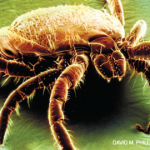In the majority of cases, early-stage Lyme disease is treated successfully with two to three weeks of oral antibiotics. Early infection involving the nervous system or heart may require intravenous antibiotics. Even when the infection is detected after significant delay or at its later stages, antibiotic treatment is still successful in most patients. “Those individuals with early-stage Lyme disease who remain undiagnosed for extended periods of weeks to months, or those who have late-stage infection of the nervous system, are more likely to have a variety of lingering symptoms such as fatigue, poor sleep, and muscle and joint pain even after treatment,” says Dr. Kalish. When symptoms linger after treatment, exercise, good nutrition, attention to other measures that promote good health, and physician follow-up will assist in recovery. The risk of Lyme disease can be reduced by avoiding tick habitats at specific times of the year, having regular tick checks, and promptly removing any tick found.
Download the complete Lyme Disease fact sheet and other patient-education materials at www.rheumatology.org by following the links to patient education from the Practice Support Menu.



